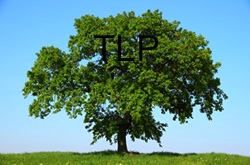In this show you will hear my take on the principles of permaculture. Most of the popular permaculturalists have their own set of principles. Check out the recommended reading list for some of these authors. David Holmgren has a pretty recognized list that I will use for this podcast. Theses 12 principles with some notes are listed below.
1) Observe and interact: By taking time to engage with nature we can design solutions that suit our particular situation.
- Observe energy flows
- Observe flora and fauna
- Observe processes
- Mat 6:26 NKJV - "Look at the birds of the air, for they neither sow nor reap nor gather into barns; yet your heavenly Father feeds them. Are you not of more value than they?
- Pro 6:6 NKJV - Go to the ant, you sluggard! Consider her ways and be wise,
2) Catch and store energy: By developing systems that collect resources at peak abundance, we can use them in times of need.
- In plants
- water
- In tanks for water
- In soil
- In contours
- In Photovoltaic panels
- In food
- God has provided abundance of energy if we can catch and store it.
3) Obtain a yield: Ensure that you are getting truly useful rewards as part of the work that you are doing.
- It is not sustainable if you cannot produce a yield. We are not actually looking at sustainability either but abundance.
- Parable of the talents
4) Apply self-regulation and accept feedback: We need to discourage inappropriate activity to ensure that systems can continue to function well.
- Pro 12:1 NKJV - Whoever loves instruction loves knowledge, But he who hates correction [is] stupid.
- Pro 25:28 NKJV - Whoever [has] no rule over his own spirit [Is like] a city broken down, without walls.
5) Use and value renewable resources and services: Make the best use of nature's abundance to reduce our consumptive behavior and dependence on non-renewable resources.
- Pro 21:20 NKJV - [There is] desirable treasure, And oil in the dwelling of the wise, But a foolish man squanders it.
6) Produce no waste: By valuing and making use of all the resources that are available to us, nothing goes to waste.
- The perfect system there is not waste but everything is cycled back through. This is true of the hydrological cycle and all natural cycles when not effected by the curse of the fall.
- eg Grey water is recycled out to the fruit trees
- eg. compost toilet
- compost pile
7) Design from patterns to details: By stepping back, we can observe patterns in nature and society. These can form the backbone of our designs, with the details filled in as we go.
- patterns in leaves
- patterns in stacking of forests
- patterns in progression from barren land to forest
- pattern in spiral (sheep horn) herb spiral
8) Integrate rather than segregate: By putting the right things in the right place, relationships develop between those things and they work together to support each other.
- Integration of species
- rather than having a row of carrots and then a cor of tomatoes and then a row of peas, integrate them into the same area.
- companion planting
- integrate the animals with the plants. and animals with other animals
- 7 levels of food forest (canopy, understory, bushes, herbacious, climbing, rizome (root), ground cover
- Integration of time (more mature and less mature)
- the principle applies in maturing children. Integrate them with all other ages.
- succession planting
- nurse crop
- Integration of systems
- water catchment integrated with food forest on contours.
9) Use small and slow solutions: Small and slow systems are easier to maintain than big ones, making better use of local resources and producing more sustainable outcomes.
- to increase fertility of the soil you don’t blast it with chemical NPK you use compost
- to do away with weeds you don’t cake on the Roundup instead you use layers of mulch (sheet mulching)
- Tortoise and the hair of Aesop’s Fables
10) Use and value diversity: Diversity reduces vulnerability to a variety of threats and takes advantage of the unique nature of the environment in which it resides.
- Don’t be a lettuce farmer
- Don’t be a cattle farmer
11) Use edges and value the marginal: The interface between things is where the most interesting events take place. These are often the most valuable, diverse and productive elements in the system.
- Look at a river edge
- Look at the edge between a forest and a pasture before the bush-hog
- The more edge you can make the better
12) Creatively use and respond to change: We can have a positive impact on inevitable change by carefully observing, and then intervening at the right time.
Resources for Today's Show:
- David Holmgren
- Toby Hemenway
- Sepp Holzer
- Register as a User
- Visit our affiliate 48 Days
- Visit our affiliate Amazon
- Consider The Legacy Partner Program






